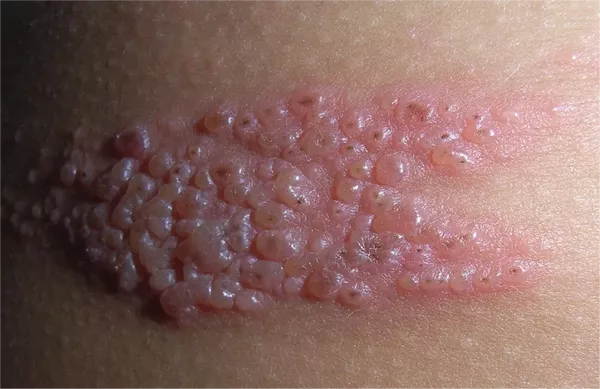Shingles, also known as herpes zoster, is a viral infection caused by the varicella-zoster virus—the same virus responsible for chickenpox. After a person recovers from chickenpox, the virus remains dormant in nerve tissue near the spinal cord and brain. Years later, the virus can reactivate, causing shingles. This condition can be quite painful and is characterized by a distinctive rash. Recognizing the early warning signs of shingles is crucial for prompt diagnosis and treatment. Understanding these signs can help individuals seek medical attention early, which can often lead to better outcomes and reduced complications.
Understanding Shingles: Causes and Risk Factors
Before delving into the early symptoms of shingles, it’s important to understand how the virus reactivates and what factors increase the risk of developing this condition. The varicella-zoster virus can reactivate due to various reasons, including:
1. Age: Shingles is more common in individuals over 50 years old.
2. Weakened Immune System: Conditions or medications that weaken the immune system can increase the risk.
3. Stress: High levels of stress can weaken the immune system, potentially triggering reactivation.
4. Underlying Medical Conditions: Certain diseases like cancer or HIV/AIDS can increase susceptibility.
5. History of Chickenpox: Anyone who has had chickenpox can develop shingles later in life.
Early Warning Signs of Shingles
Recognizing the early symptoms of shingles is essential for timely intervention. The signs typically manifest before the appearance of the characteristic rash. Here are the key early warning signs to watch for:
1. Pain and Tingling: Often, the first symptom of shingles is pain, burning, or tingling in a specific area of the body. This discomfort can occur anywhere but commonly affects one side of the torso, face, or neck. The pain can be intense and may precede other symptoms by a few days.
2. Sensitive Skin: The skin in the affected area might become hypersensitive to touch or pressure. Clothing or even a light touch may cause pain or discomfort.
3. Itching or Numbness: Some individuals experience itching or numbness before the rash appears. This can be confusing, as itching is commonly associated with other skin conditions.
4. Fever and Chills: Flu-like symptoms such as fever, chills, headache, and fatigue can occur at the onset of shingles. These symptoms may be mild initially but can worsen as the condition progresses.
5. Swollen Lymph Nodes: Lymph nodes near the affected area may become swollen and tender.
6. Digestive Issues: In some cases, individuals may experience abdominal pain, nausea, or diarrhea before the rash develops.
Progression to the Shingles Rash
After the initial warning signs, a characteristic rash usually develops. This rash typically consists of small, fluid-filled blisters that form in clusters. The rash follows a dermatomal pattern, meaning it appears along the path of a specific nerve. Common areas affected by the rash include the torso, face, neck, or scalp. The rash can be extremely painful and may cause itching or burning sensations.
It’s important to note that the appearance of the rash signifies an active shingles infection. By recognizing the early warning signs before the rash emerges, individuals can seek medical attention promptly, potentially reducing the severity and duration of symptoms.
When to Seek Medical Attention
If you suspect you may have shingles based on the early warning signs, it’s crucial to consult a healthcare professional promptly. Early diagnosis and treatment can help alleviate symptoms and reduce the risk of complications, such as postherpetic neuralgia—a condition characterized by persistent pain in the area affected by shingles.
Contact your healthcare provider if you experience:
- Persistent pain or discomfort in a specific area of your body.
- Unexplained rash or skin changes, especially if accompanied by pain.
- Flu-like symptoms such as fever, headache, or fatigue.
Diagnosis and Treatment Options
Upon examination, a healthcare provider can usually diagnose shingles based on the characteristic rash and associated symptoms. In some cases, additional tests such as viral cultures or polymerase chain reaction (PCR) tests may be conducted to confirm the diagnosis.
Treatment for shingles typically involves antiviral medications to reduce the severity and duration of symptoms. Pain relievers, anticonvulsants, or topical treatments may also be prescribed to manage discomfort and promote healing.
Prevention Strategies
While shingles can be challenging to prevent entirely, vaccination is an effective way to reduce the risk of developing this condition. The shingles vaccine is recommended for individuals over 50 years old, even if they have had chickenpox before. Vaccination not only lowers the risk of shingles but also reduces the likelihood of developing postherpetic neuralgia if shingles does occur.
Conclusion
Recognizing the early warning signs of shingles is key to prompt diagnosis and treatment. By understanding the initial symptoms—such as pain, tingling, and flu-like symptoms—individuals can take proactive steps to seek medical attention. Early intervention not only helps alleviate discomfort but also reduces the risk of complications associated with shingles. If you suspect you may have shingles based on the described symptoms, consult your healthcare provider promptly for appropriate evaluation and management.
Related Topics:
What is the Onset of Shingles on the Stomach

























